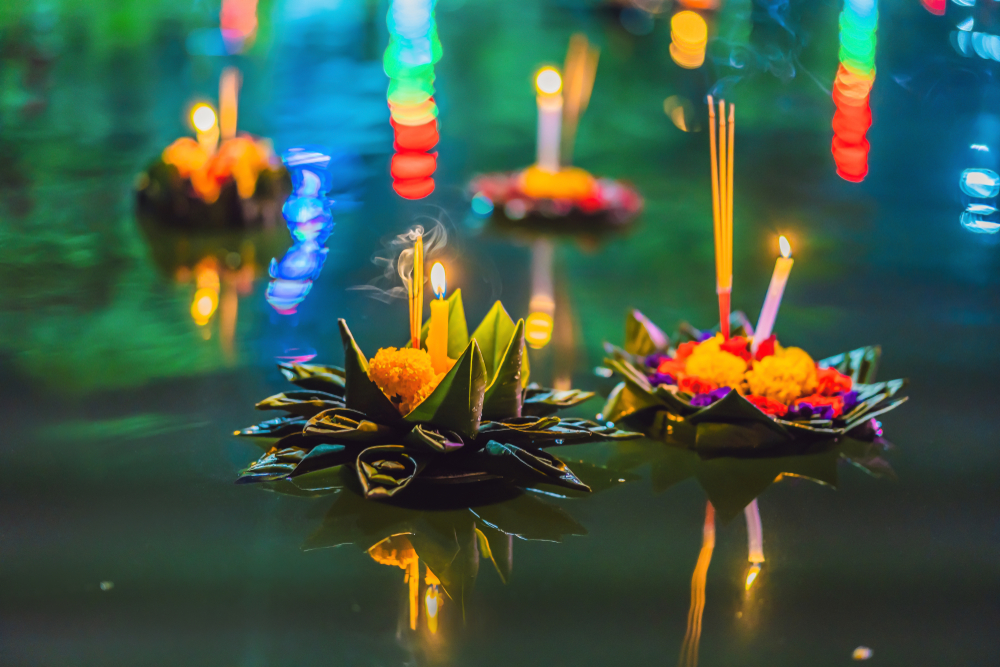Religion: Folk and Traditional Religions
Animism
Introduction: Animism is a traditional belief system that has been practiced in Thailand for centuries, particularly among rural communities. It is a complex system that emphasizes the interconnectedness of all living things, including spirits and ancestors. Animism is the belief that all things, even inanimate objects, animals, and natural phenomena, have a spirit.
Origin: The origins of animism in Thailand are not clear, but it is believed to have developed out of the indigenous beliefs of various ethnic groups. Historically, Thailand was an agricultural country, with those who live close to the land and are reliant on it often having animist beliefs. Animist practices have been influenced by Buddhism, Hinduism, and Chinese folk religion.
History: Animism has a long history in Thailand, and it has been practiced long before the arrival of Buddhism in the third century BCE. Animist practices continue to be an important part of Thai culture and spirituality, often fused into Buddhist and Hindu practices.
Adherents: Animism is practiced on a daily basis by most Thai people, transcending ethnicities. Among adherents are those from the Lao, Ahom, Shan, Dai, Khamti, and Isan ethnicities.
Belief System: Animism is based on the belief that all things, both animate and inanimate, have a spirit or soul. These spirits are believed to have the power to influence human affairs and must be respected and appeased through various rituals and offerings. Ancestor veneration is important to animists in Thailand, as these deceased ancestor spirits are thought to act like guardian angels.
Practices: Animist practices include a variety of rituals and daily offerings, which may include food, drink, flowers, incense, and other items. These are given to ancestor spirits to honor and remember them. Spirit houses are a noticeable animist practice in Thailand and a place for offerings, located outside homes and businesses as well as most places where people congregate. These small houses are where the spirit of the land resides, with any new buildings requiring a spirit house, as the spirit may cause mischief in the new establishment if a new home isn't provided.
Rituals, Events, Celebrations
- Ancestor worship: Ancestors are believed to have a continued presence and influence on the lives of their descendants. Offerings and ceremonies are performed to honor and appease them.
- Ghost Festival (Phi Ta Khon): This is the first festival of a three-day event called Bun Luang and includes fertility themes and parades of masked revelers. Held between March and July, festivities are loud (meant to wake the dead) and in honor of the Buddha as well as in tribute to ghosts who deliver rain.
- Loy Krathong: The name of this festival refers to a type of small, floating religious offering, with the occasion a fusion of animist, Hindu, and Buddhist beliefs. Offerings are made for the goddess of water or serpent naga spirits, with various origin stories and meanings of the festival particular to the country's major religions. Also known as the Festival of Lights, fireworks and parties accompany the main tradition of putting out floating offerings which also signify the release of bad luck and a new, hopeful start.
Sacred Texts: Animism does not have a single sacred text, but various folktales and legends—as well as practices—are passed down through generations.
Places of Worship: Animist shrines, alters to ancestors, and spirit houses are found in many places, including homes, businesses, and public spaces. These are the sites for offerings, which still are given even in the absence of a spirit house by placing incense or other offerings on a small chair, table, or even the pavement. Owners of small businesses may make offerings in this way, praying each morning for a successful day.
Sacred Places: Animists believe that certain natural features, such as mountains, rivers, and trees, are sacred and have their own spirits. Spirit houses are sacred places to make offerings to land spirits, while fig trees, banyan trees, tamarind trees, and many large old trees hold sacred status in Thailand. Daily offerings are placed at the base of these trees—which usually have colorful ribbons tied around the trunk—for the spirit thought to reside inside, with passing motorists beeping their horns at the tree out of respect. Alters to ancestor within homes are other sacred sites.
Leadership Structure: Animism does not have a formal leadership structure or hierarchy. Shamans, however, are see as intermediaries between the human and spiritual world.
Leaders: There are no specific leaders in animism, although spiritual practitioners (shamans) and healers may have a respected position in their communities.
Role in Society: Animism plays an important role throughout Thai society, where it is often practiced alongside Buddhism. Animist beliefs and practices are deeply intertwined with Thai culture, and they continue to be an important part of the spiritual and social lives of most people in Thailand.
Copyright © 1993—2024 World Trade Press. All rights reserved.

 Thailand
Thailand 
